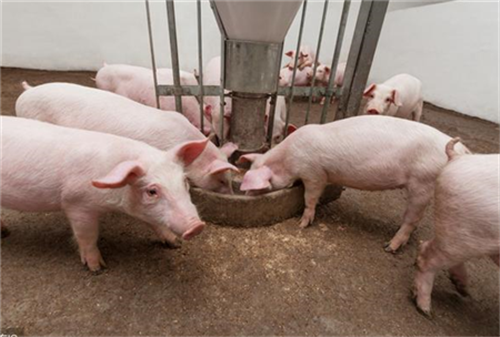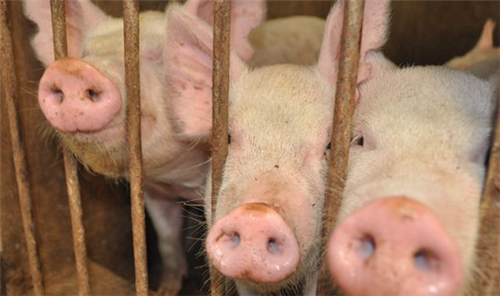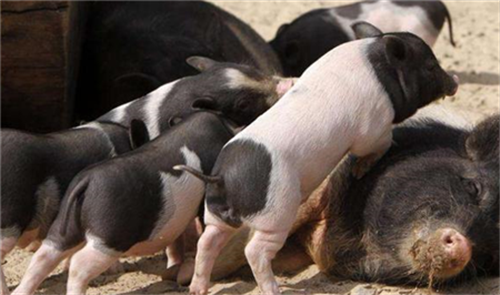Why are weaning piglets prone to diarrhea? These preventive measures are simple and effective.
For many farmers, piglets are prone to diarrhea before and after weaning is a very headache, light money and effort, heavy piglets die. Today, let's talk about why piglets tend to have diarrhea before and after weaning, and how to effectively prevent it.
First, why are weaning piglets prone to diarrhea?
1. Stress before and after weaning
After weaning, the piglets were separated from the delivery pen to the nursery, which made the piglets lose the caress and protection of the sows, and changed from being attached to the sows to living alone, and it was easy for the piglets to fight and bite each other when they were reorganized and nestled after weaning. coupled with the changes of temperature and environment, the strong stress of piglets leads to the disorder of advocacy function, which leads to diarrhea.
2. Changes in diets
Before weaning, piglets are mainly breast milk, supplemented by feed, and completely absorb nutrients from feed after weaning. Because breast milk is rich in fat and easy to digest casein. After weaning, piglets can not get protein from breast milk, but from plant protein in feed, and the feed contains crude fiber that piglets can hardly digest, which makes piglets suffer from diarrhea.
3. Digestive insufficiency
Stress caused by imperfect gastrointestinal function and deficiency of digestive enzymes in weaned piglets. One week after weaning, the activities of various digestive enzymes in piglets decreased to 1 beat 3 of the pre-weaning level, affecting the digestion and absorption of nutrients, resulting in diarrhea.

4. Iron deficiency anemic diarrhea
During the lactation stage, piglets can get some iron from breast milk. After weaning, some piglets eat little or no food at all, resulting in iron deficiency, which in turn hinders the synthesis of red blood cells and causes diarrhea.
5. Low immune function.
Due to a series of stress reactions such as spirit, environment, feed and so on, the imperfect immune system and resistance of piglets decreased after weaning, and pathogenic Escherichia coli and other harmful microorganisms were easy to invade and lead to diarrhea in piglets. How to effectively prevent weaning piglets from diarrhea, these practical methods are simple and effective!
1. Do a good job of keeping warm and anti-freezing
The thermoregulation function of newborn piglets is poor, so keeping warm and anti-freezing is the key to improve the survival rate of piglets. The optimum temperature for piglets at birth was 32 ℃, 30 ℃ ~ 32 ℃ at 1 ~ 3 days, 28 ℃ ~ 30 ℃ at 4 ~ 7 days, and 22 ℃ ~ 25 ℃ at 8 ~ 35 days.
Especially after entering the winter, the heat preservation work of piglets must be done well, especially the temperature change of piglets from delivery fence to nursery fence can not be too big, such as insulation lamp, floor heating, laying wood, bedding grass and other measures can effectively achieve the effect of heat preservation.
2. Earlier food inducement and replenishment
Piglets feed at 5-7 days old, feed at 14 days old, feed at weaning to meet 60%-70% physiological needs, exercise the function of the digestive system of piglets, promote gastrointestinal development, prevent diarrhea, increase weaning litter weight, and lay the foundation for complete weaning.
3. Clean and suitable temperature of drinking water
Many farmers do not care about the importance of drinking water in their daily feeding and management. due to the rapid growth and strong metabolism of piglets, and because the fat content in breast milk is as high as 7%-11%, piglets are lively and active, so starting from the age of 3 days, clean drinking water must be provided. The temperature of drinking water should not be too cold, and drinking dirty water or urine can easily lead to diarrhea.
4. Timely iron supplement
In general, once piglets have diarrhea, or diarrhea for a long time, there will be varying degrees of dehydration, serious anemia. Piglets have their own iron reserves of 50 mg at birth, and need 8 mg of iron for growth and development. 0.2 mg of iron is contained in every 100 grams of breast milk, and the amount of iron obtained by piglets from milk is about 1 mg a day, so piglets begin to supplement iron 3 days after birth. in order to prevent iron deficiency diarrhea and even death of piglets.
- Prev

Acute, high fever, mortality 80%! The pig farm is most afraid of it in the hot and rainy season!
Acute, high fever, mortality 80%! The pig farm is most afraid of it in the hot and rainy season!
- Next

Ring, ring again! The pig farm detection rate is as high as 100%. How to solve it?
Ring, ring again! The pig farm detection rate is as high as 100%. How to solve it?
Related
- On the eggshell is a badge full of pride. British Poultry Egg Market and Consumer observation
- British study: 72% of Britons are willing to buy native eggs raised by insects
- Guidelines for friendly egg production revised the increase of space in chicken sheds can not be forced to change feathers and lay eggs.
- Risk of delay in customs clearance Australia suspends lobster exports to China
- Pig semen-the Vector of virus Transmission (4)
- Pig semen-the Vector of virus Transmission (3)
- Five common causes of difficult control of classical swine fever in clinic and their countermeasures
- Foot-and-mouth disease is the most effective way to prevent it!
- PED is the number one killer of piglets and has to be guarded against in autumn and winter.
- What is "yellow fat pig"? Have you ever heard the pig collector talk about "yellow fat pig"?

